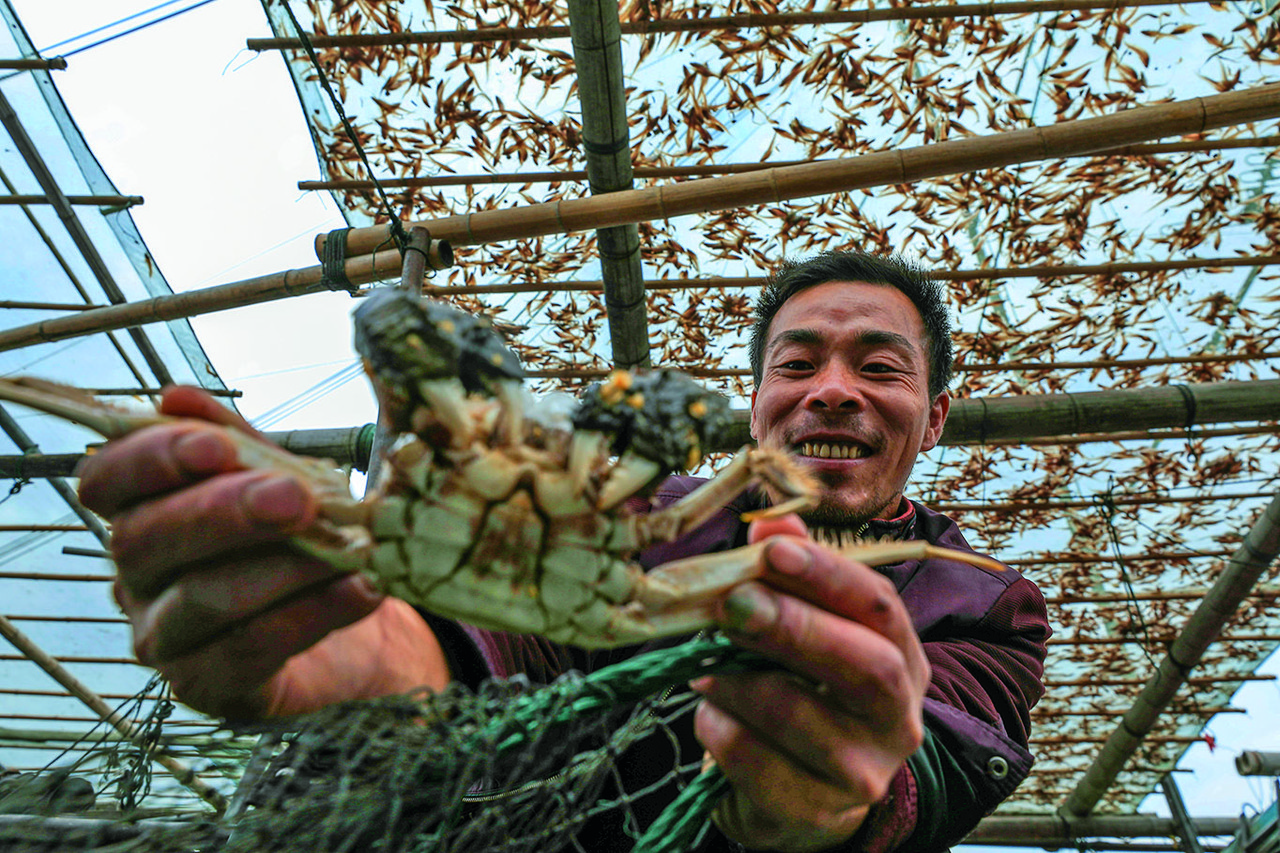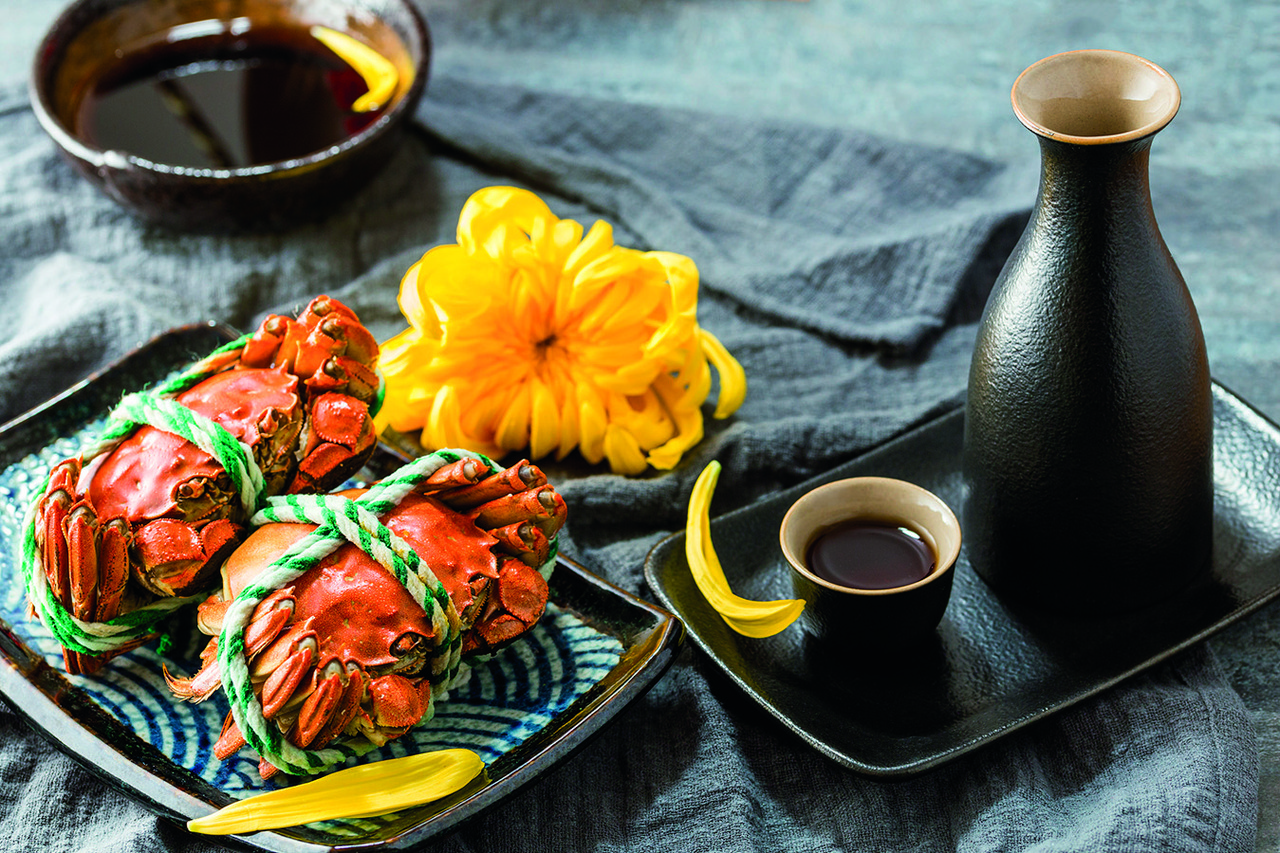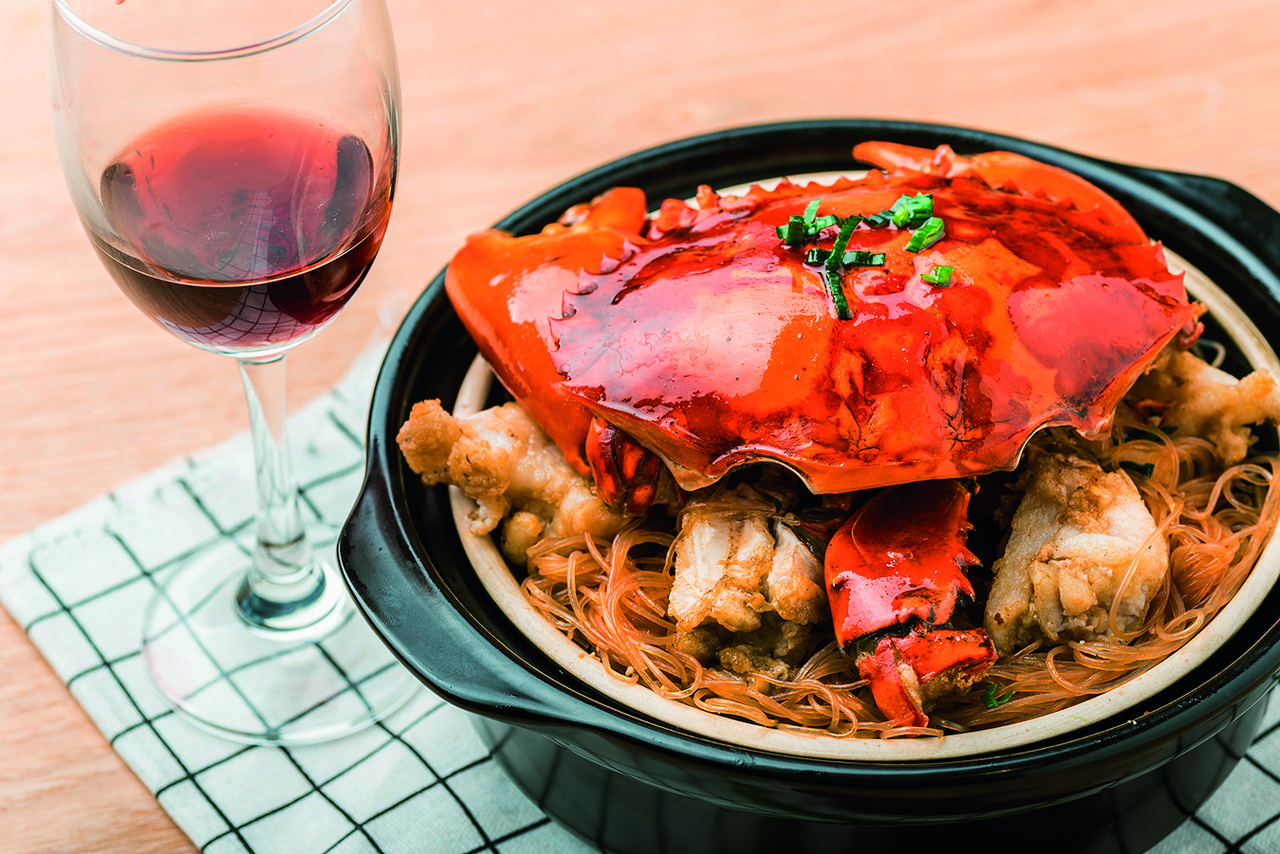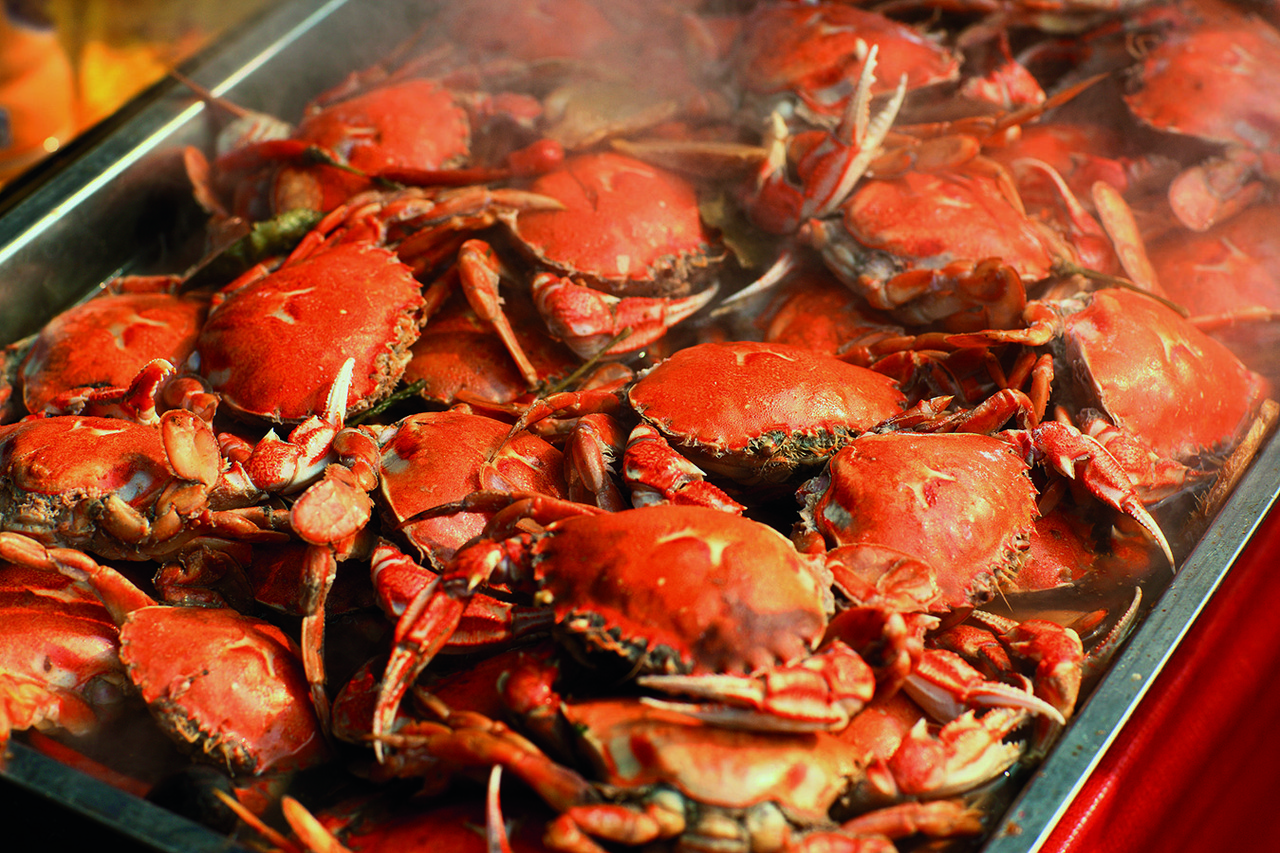秋风起,蟹脚痒,持螯赏菊,正是时候。
对螃蟹感情最深的文人,就是李渔。但是,江南诸地的文人,哪个不对螃蟹情深深意切切呢。流传甚广的一句蟹诗“不食螃蟹辜负腹”,就是宋代台州人徐似道写的,他满怀激情地讴歌秋天的螃蟹,还说“持螯把酒与山对,世无此乐三百年”。
的确,“不食螃蟹辜负腹”,到了秋天,什么都可以辜负,甚至爱情也可以暂时放一边,就是不可以对不住自己的味蕾和肠胃啊。
“菜花甲鱼菊花蟹,刀鱼过后鲥鱼来。”秋风起了,菊花开了,蟹脚痒了,比蟹脚更痒的是贪吃鹫们的脚,这时不去弄几只肥蟹吃吃,岂非辜负大好秋光?

这时节,随便什么蟹都肥得可以,青蟹、梭子蟹、湖蟹、田蟹,剥开后蟹膏似玉,蟹黄似金。秋天吃蟹,好像开春一定要吃笋,清明一定要吃青团一样,已经融入江南文人的生活里。人生的乐趣大抵也是来自琐琐碎碎的生活细节中。要是秋风起时,不吃上几只螃蟹,江南的文人一定觉得这一年是虚度了。人生有许多事都虚无不定,只有吃进嘴里,才有踏实的感觉,是吧?
螃蟹虽说种类甚多,但文人最爱的是青壳白肚的青蟹、黄毛金钩的湖蟹、丰腴肥美的梭子蟹。台州曾经捕获过一只巨无霸的梭子蟹——它的大螯比手电筒还要大。三门的青蟹王更是了得,肥肥壮壮,看上去简直就像是螃蟹精。
上海人、苏州人一到秋天,非得弄几只大闸蟹吃吃。在他们眼里,除了大闸蟹,别的蟹都不算好蟹。但梁实秋先生说得实在:“蟹不一定要大闸的,秋高气爽的时节,大陆上任何湖沼溪流,岸边稻米高粱一熟,率多盛产。”梁先生乃蟹族知音也。说什么蟹非阳澄湖大闸蟹不吃的人,我怀疑他没见过什么大世面。论蟹肉之细嫩肥美,三门青蟹跟大闸蟹绝对有的一拼。

文人嘴刁,吃蟹讲究个“七尖八圆”,《巾子山志》有旧人一首诗:“气爽天高松露碧,蟹肥酒熟菊花黄。闲吟自有逍遥处,小饮浑忘名利场。”持螯赏菊,蟹一定要肥,菊一定要美,酒一定要陈,若菊不美蟹不肥酒不香,或者吃到的是只空壳蟹,那兴致是要大打折扣的。
农历七八月,是蟹最肥美的时候,农历七月,尖脐的雄蟹满腔脂肪;到八月菊花开时,圆脐的雌蟹满是蟹黄。区分螃蟹雌雄,除了看脐,也有些聪明人看腿识蟹:雌蟹仅两螯上有灰黑的一团绒毛,余腿光洁,而除螯上有毛,八条腿上还有一排细毛必是雄蟹。男人腿毛重,雄蟹想来也是如此。
关于螃蟹宴,无论是《金瓶梅》还是《红楼梦》中都有提及。青蟹之乡三门,不但为青蟹办了个青蟹节,还在青蟹节时推出了螃蟹宴。我是有口福之人,机缘巧合吃了一回全蟹宴,便回味了好久。全蟹宴共十二道菜,以青蟹为主料,配上反映三门当地特色景观的“日出三门湾”“琴江跨彩虹”“华夏第一蟹”“蛇蟠千洞岛”等菜名,颇有地方特色。比如“日出三门湾”,就是用南瓜雕成三根柱子,中间用蛋黄象征一轮红日,周边以青蟹肉为主,加以猕猴桃、橘子和霉干菜等三种不同口味的原料调制而成。幸好是日出三门湾,要是日出九寨沟,可能要雕九根柱子了。近几年蟹价骤贵,能吃到全蟹宴的人也不多,正如刘姥姥所说:“一顿螃蟹宴够我们庄稼人过一年!”惭愧惭愧,下回不去吃什么螃蟹宴了,吃只把清蒸蟹意思一下就行了。

说起来,那些爱吃蟹的上海人,肯定不会相信,我们这里的人口福竟是这般好,一到秋天,许多单位食堂都有蟹供应,这在全国有几个城市做得到?!
在窗外飘进来的淡淡菊花香里,吃几只带膏的蟹,喝几杯老酒,海边人这秋天过得呀,真个是有滋有味。
In Chinese history, the most vociferous crab lovers are ancient scholars who wrote emotionally about the seasonable delicacy in poems and essays. How these scholars ardently loved crabs is what modern journalists and essayists love to discuss and write about when the crab-eating season is in.
Li Yu (1611-1680), a playwright of the Ming Dynasty and native of Hangzhou and epicurean, loved the crab so much that he stingily saved every copper coin all the year round just in order to abandon himself to a crab-eating spree in the autumn season. “Abstaining from enjoying crabs is a sin against my culinary aesthetics,” famously said Xu Sidao, a scholar of the Song Dynasty (960-1279) and native of Taizhou in southeastern Zhejiang.

For ancient scholars whose voices are heard in the written history, crabs were a delicacy they couldn’t afford to miss. They religiously followed a general don’t-miss seasonable food list and enjoyed life that way. For them, it was a ritual to enjoy seasonable delicacies in Jiangnan. They took note of these delicacies, such as bamboo shoots in the spring, the sweet green rice dumpling on the day of the Qingming Festival, and crabs in the autumn, just to name a few. There are all kinds of crabs in autumn. The scholars of the past harbored no discrimination against the mud crab from the sea, the freshwater hairy crab, and the swimming crab, which were all tasty.
Residents in Shanghai and Suzhou prefer the hairy crab, thinking no other crab in the world can stand the comparison with the hairy crab. I doubt the wisdom of this preference by these people. They are so parochial that they have the slightest idea how delicious other crabs can be. Take the mud crab in Sanmen in Zhejiang for example. The hairy crab is definitely inferior to the mud crab on many counts, in my opinion.

Scholarly gourmets of the past were most eager to create crab recipes. They spared no efforts to find out when crabs became most suitable for consumption, what crabs were the best for gourmets, and how crabs should be prepared, and how wine and other dishes should go with a crab dinner. Once upon a time I attended a 12-course crab dinner in Sanmen. This banquet opened my eyes to the chef’s imagination, meticulous attention and effort, tradition, and best culinary art.
Those epicureans in Shanghai and Suzhou would probably be astonished to learn that in my hometown, crabs are a common delicacy in many workplace canteens when crabs are in season. How many people in other cities across the country could be as lucky as we are in Sanmen in the crab season?
